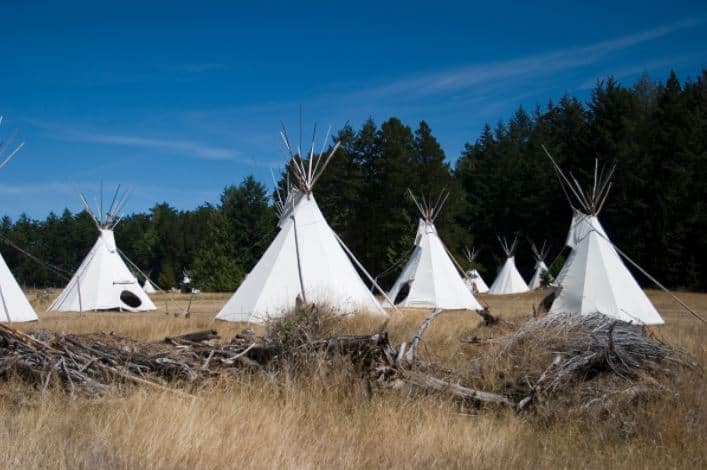Superior Court of Québec decision signals significant change in approach to Aboriginal rights

In the recent case of R c Montour, 2023 QCCS 4154, the Superior Court of Québec made a significant departure from the foundational principals governing Aboriginal rights in Canada, which may have profound implications for future Aboriginal rights claims.
Background
On May 9, 2019, Derek White and Hunter Montour (the Applicants), two Mohawks of Kahnawà:ke, were each found guilty of criminal offences relating to the importation of large amounts of tobacco from the United States without paying the applicable duties pursuant to the Excise Act.
The Applicants asked for a permanent stay of proceedings, arguing that their Aboriginal rights under section 35(1) of the Constitution Act, 1982 were unjustifiably infringed. They claimed that 10 Treaties negotiated between 1664 and 1760, along with the Covenant Chain (an overarching oral Treaty between the British Crown and the Mohawk nation), guaranteed their right to trade in tobacco.
Court decision
The Court stayed the proceedings and held the applicable section of the Excise Act violated the Applicants’ Aboriginal and Treaty rights.
The Court concluded that not only did the Applicants demonstrate their Aboriginal right to freely pursue economic development, but this right protected their participation in the Mohawks of Kahnawà:ke tobacco trade industry.
The Court also concluded that the Applicants proved that their Aboriginal right to freely pursue economic development was infringed and the Crown failed to meet their burden to prove the infringement was justified.
Updated legal test
The established Aboriginal rights test is found in the Van der Peet case, which requires the Court to: (i) characterize the right being claimed; (ii) determine if the evidence establishes a pre-contact practice, custom or tradition that was integral to the pre-contact society; and (iii) consider if the modern right being claimed is demonstrably connected to, and reasonably regarded as a continuation of, the pre-contact practice.
In this case, the Court departed from the Van der Peet test, stating that knowledge about the lives of Indigenous Peoples in Canada and the pressing need for reconciliation has evolved since Van der Peet was decided. The Court formulated and applied a new test which requires the person asserting an Aboriginal right to: (i) identify the collective right; (ii) prove that the right is protected by their traditional legal system; and (iii) show that the practice or activity in question is an exercise of that right.
Identifying the Collective Right
The Court noted that an approach centered on collective rights is more aligned with the United Nation’s Declaration on the Rights of Indigenous Peoples (UNDRIP), which recognizes that Indigenous peoples have generic, inherent rights and they do not “have to prove their rights, right by right, group by group”.
At the first stage of the test, the Court must identify the “fundamental norm” which is protected from state interference. In Montour, the fundamental norm was the right to freely determine and pursue economic development – not simply the activity of transporting tobacco across the border.
Protection by Traditional Legal Systems
The second stage of the test emphasizes Indigenous legal systems instead of particular practices. This approach recognizes that, not only were Indigenous Peoples occupying the land that is now Canada prior to contact, but they were and are Nations with political, social, economic, and legal systems. In Montour, the Court held that the right to pursue economic development is a “generic” right protected under the traditional legal system of the Mohawks of Kahnawà:ke. Generic in this sense means that the right is shared by all Indigenous Peoples and is essential to the continuity of Indigenous societies. The Court noted that many other rights depend on the generic right to pursue economic development, including the right to develop education systems and Indigenous media. In this case, there was also evidence showing that the right to pursue economic development was protected under the traditional legal system of the Mohawks of Kahnawà:ke.
Show the Practice or Activity is an Exercise of the Right
The Court noted that in certain circumstances Aboriginal rights claims brought by individuals can lead to tensions, as the interests of the individuals may differ from the interests of the community as a whole. At this stage, it is important to distinguish between the existence of a collective right (stage two), and the individual exercise of that right (stage three).
At the third stage of the test, the question is whether the activity under review represents an individual exercise of the collective right. In Montour, there was evidence showing that the tobacco trade the Applicants participated in improved the economic well-being of the community as a whole. A large part of the community viewed the tobacco trade as the best path to economic self-determination. As a result, the Applicants’ actions were done further to the collective right to freely pursue economic development.
Going forward
The decision in Montour represents a significant departure from existing Supreme Court of Canada (“SCC”) case law and is being appealed by the Province of Québec.
This is the second time in recent years that the Québec Courts have made steps towards a larger framework for reconciliation. In the recent Reference re An Act respecting First Nations, Inuit and Métis children, youth and families, 2024 SCC 5, the SCC upheld a Québec Court of Appeal’s decision affirming Indigenous communities’ jurisdiction and right of self-government in relation to Child and Family Services. The SCC held An Act respecting First Nations, Inuit and Métis children, youth and families, SC 2019, c 24, as a whole is constitutionally valid. The SCC decision will likely provide some guidance for the appeal in Montour. Please see a more detailed discussion of the SCC decision in our previous blog post.
If Montour is upheld, it will represent another significant step towards a framework of reconciliation in Canada which recognizes certain Aboriginal rights as generic rights. This approach is consistent with the evolving nature of Aboriginal rights and may help relieve Indigenous communities from the burden of proving their inherent rights in each case.
MLT Aikins Indigenous practice area will continue to monitor this case and other ongoing developments. If you have questions about how this case may affect you or your organization, we encourage you to reach out to one of the lawyers in our Indigenous practice group.
Note: This article is of a general nature only and is not exhaustive of all possible legal rights or remedies. In addition, laws may change over time and should be interpreted only in the context of particular circumstances such that these materials are not intended to be relied upon or taken as legal advice or opinion. Readers should consult a legal professional for specific advice in any particular situation.






